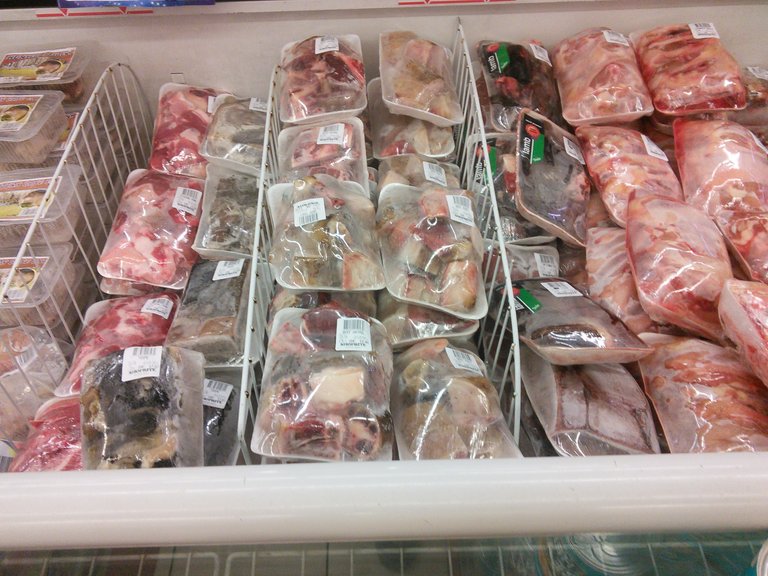Food preservation is a strong necessity since humans and even animals cannot consume all food products at once, there has to be a way to have the food product stored for us to have a consistent food supply.
Image source

The practice of food preservation didn't just start today, it dates back to prehistoric times, when food was preserved from getting spoilt after harvesting or slaughtering them. Drying, refrigerating, and fermenting are among the oldest methods of food preservation.
However, in modern terms; canning, adding chemicals, freezing, and pasteurization are used. The advancement in the materials used for packaging has played a strong role in modern food preservation.
Food spoilage means the food in question has become unfit for human consumption, these changes could be a result of different contaminations and factors, contamination by microorganisms, degradation by endogenous enzymes, and infestation by insects. In addition to these contaminations, physical and chemical changes like the tearing of plants and animal tissues or the oxidation of some food constituents.
The enzymes contained in the cells of plants and animal tissues could be released due to any mechanical damage inflicted during postharvest handling. These enzymes will start to break down cellular material, and the chemical reactions catalyzed by the enzymes will lead to the degradation of food quality, like the development of off-flavors, loss of nutrients, and the deterioration of texture.
Image source

Dehydration means water removal from food, it is a simple method of preventing water from getting spoilt through water removal.
Radiation is a method of preservation known as cold sterilization, the use of X-rays, and gamma rays will destroy all the unwanted microbes available in food.
Fungi and bacteria are the main types of microorganisms that cause food spoilage and food-borne illnesses. Food contamination can happen at any time, either during storage, harvesting, processing, distribution, handling, or preparation of food items. The main sources of microbial contamination are; soil, animal feed, air, plant surfaces, animal hides and intestines, sewage, plant surfaces, and food processing machinery or utensils.
Bacteria are unicellular organisms with a simple internal structure when compared with the cells of other organisms. An increase in the population of bacteria is known as bacterial growth. The growth of bacteria is influenced by the availability of nutrients, PH level, oxygen level, and moisture, as well as the presence or absence of inhibiting substances.
Fungi, on the other hand, are two types which are very important in food spoilage, they are; yeasts and molds. Molds are multicellular fungi reproduced through the formation of spores, yeasts on the other hand are unicellular fungi that are larger than bacterial cells.
Let's talk about some of the existing methods of food preservation that have proven to help through the decades.
Chemical method of food preservation: Edible oil and salt are two major preservatives used for the prevention of microbial growth. Prevention through salt is termed salting, which is used for the preservation of fruits for a long time, fish and meat can be preserved through salting, other methods of synthetic preservatives include; sodium benzoate, vinegar, sodium metabisulphite, and the like.
Heat and cold methods: Refrigeration and boiling prevent around 70 percent of microbial growth. Boiling destroys the microorganisms that cannot tolerate intense temperatures. Thus food preservation is helped, refrigerators on the other hand have low temperatures, since microbes do not usually get the optimum temperature required for growth, it means growth is inhibited.
Canning as a form of preservative, has food sealed in an airtight container kept at high temperatures.
Sterilization is another method used for the removal of microbes from food, for instance, sterilizing milk at 100 degrees centigrade will destroy the microbes.
Freezing provides a form of excellent preservation method for national quality foods.
Sugar: Sugar is another form of preservative, commonly used in jellies and jars. Sugar is a very good form of moisture absorbent, when moisture content is reduced, microbial growth is restrained as well.
Smoking is another form of preservation, often used for the preservation of fish and meat. The wood used for smoking contains a large number of anti-microbial compounds that slow down the rancidification of animal fats.
Conclusion.
Gradually entering the agricultural world to improve my knowledge, I understand the importance of food and farm products. Food preservation is a necessity and we must learn how to handle it.
References.
https://byjus.com/biology/food-preservation-methods-food-poisoning/
https://agricultureandfoodsecurity.biomedcentral.com/articles/10.1186/s40066-017-0130-8
https://www.britannica.com/topic/food-preservation/Industrial-freezers
Thanks for your contribution to the STEMsocial community. Feel free to join us on discord to get to know the rest of us!
Please consider delegating to the @stemsocial account (85% of the curation rewards are returned).
Thanks for including @stemsocial as a beneficiary, which gives you stronger support.